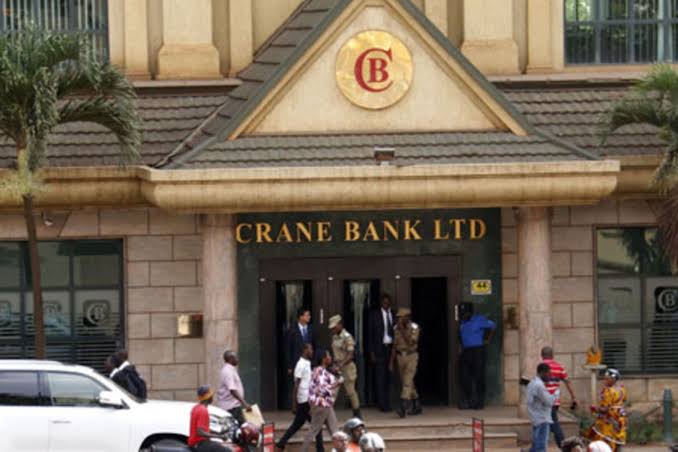
KAMPALA. The Supreme Court has upheld a decision reducing the legal costs payable to tycoon Sudhir Ruparelia and his company Meera Investments Ltd from Shs 45.8 billion ($12 million) to Shs 500 million ($130,000) each, describing the earlier award as “manifestly excessive” and “unsupported by law.”
A three-member panel led by Chief Justice Alfonse Owiny–Dollo, sitting with Justice Elizabeth Musoke and Justice Stephen Musota, ruled that the Registrar’s initial award was “unreasonable and injudicious.”
While Justice Musoke fully agreed with the Chief Justice’s reasoning, Justice Musota partly dissented, arguing that Sudhir and Meera deserved “a higher award” given the scale and duration of the litigation.
“Having made the finding that the issues for consideration in the appeal did not involve any amount of money, I am of the opinion that the permissible instruction fees would not be anywhere near the exorbitant amount of Shs 45 billion awarded by the Registrar,” Chief Justice Owiny–Dollo said.
“The learned judge acted with justification in setting aside the award. I uphold the reduction to Shs 500 million per applicant as the right thing to do.”
The ruling originates from a taxation reference filed by the Ruparelia Group following the Supreme Court’s 2021 dismissal of the Bank of Uganda’s (BoU) appeal in the Crane Bank case.
The Chief Justice said the appeal raised a pure question of law – whether Crane Bank (in receivership) had the capacity to sue – and not a monetary dispute involving Shs 458 billion as alleged by the central bank.
“The subject matter value of the suit was indisputably not in issue,” Owiny–Dollo wrote.
“It would be wrong to consider the monetary value as the determinant for instruction fees in an appeal revolving around a question of law.”
He added that while the advocates for the applicants deserved fair remuneration, the issues before the court were neither complex nor novel.
“There was no complexity or novelty in the issues before court to justify such an alarming award of instruction fees,” the Chief Justice said.
“The point of law regarding the competence of a receiver to sue is straightforward and clearly provided for under the Financial Institutions Act.”
The Supreme Court partly disagreed with Justice Mike Chibita’s earlier finding that Sudhir and Meera could not file separate bills of costs since they shared the same legal counsel.
Owiny–Dollo ruled that the two were distinct legal entities and therefore entitled to separate awards.
“The law does not prohibit the filing of separate bills of costs for two or more persons who have instructed the same advocate,” the ruling stated.
“The taxing officer must only disallow costs that are duplicative or unnecessary.”
Under the final order, both Sudhir and Meera Investments will each receive Shs 500 million, bringing the total payable by the Bank of Uganda to Shs 1 billion ($260,000).
The Supreme Court reaffirmed that it is the Bank of Uganda, not Crane Bank (in receivership), that bears responsibility for the costs.
“The courts lifted the corporate veil over Crane Bank Ltd, exposing the Bank of Uganda as, in reality, the one which instituted the suit,” Owiny–Dollo said.
“Accordingly, the Bank of Uganda bears the responsibility to meet the costs ordered in this matter.”
The dispute originates from 2017, when the Bank of Uganda, acting as receiver for Crane Bank Ltd, sued Sudhir and Meera Investments for alleged misappropriation of over Shs 458 billion and transfer of 48 properties.
The High Court dismissed the case, ruling that Crane Bank (in receivership) lacked legal capacity to sue. The Court of Appeal and later the Supreme Court upheld that decision, marking a series of courtroom defeats for the central bank.
The panel of judgealso upheld Justice Chibita’s earlier order reducing instruction fees for interlocutory applications from Shs 50 million to Shs 5 million each.
Owiny–Dollo said the lower amount reflected the nature of the applications, which were “not intricate” and did not demand extensive research or preparation.
“The miscellaneous applications were not intricate as to attract Shs 50 million as instruction fees,” the Chief Justice said. “The awards were exorbitant and unreasonable.”
He further confirmed that fees for drawings, attendances, and perusals were already covered under instruction fees and could not be charged separately.
Owiny–Dollo used the ruling to emphasize judicial restraint and access to justice.
“Instruction fees should not be too low as to discourage potential recruits to the profession, but must not rise to a level that would prohibit the ordinary justice seeker from accessing the courts,” he said.
The decision underscores the Supreme Court’s broader view that legal taxation must balance professional reward with public interest, particularly in high-profile financial disputes involving public institutions.